Exhibitions are among the most effective marketing tools that bring together companies, institutions, and individuals from various sectors. The different types of exhibitions serve as dynamic platforms for direct communication between exhibitors and visitors, fostering economic growth and market expansion. With the increasing focus on event planning and conference management, exhibitions have become essential for showcasing products, services, and innovative ideas tailored to targeted audiences.
What Are the Main Types of Exhibitions and Why Are They Important?
Exhibitions vary widely in purpose and scope, each designed to serve different industries and target groups. They are strategic platforms that facilitate marketing, promotion, and knowledge exchange. Below are the most common types of exhibitions and their unique value:
1. Trade Exhibitions
Trade shows are among the most popular and vital types of exhibitions. They focus on presenting new products and services, helping businesses expand their client base. A successful trade exhibition depends on creating an interactive environment that encourages networking and business collaboration.
2. Industrial Exhibitions
These exhibitions highlight the latest advancements in manufacturing, engineering, and industrial technologies. They offer opportunities for investors and professionals to explore innovations and cutting-edge solutions, boosting competitiveness in the industry.
3. Art Exhibitions
Art exhibitions showcase creative works such as paintings, sculptures, and photography. They serve as vital platforms to promote artists and their talents. Creative marketing ideas for art exhibitions can help attract larger audiences and media attention.
4. Cultural Exhibitions
These exhibitions aim to preserve and promote cultural heritage through books, traditional displays, and cultural seminars. They play a key role in spreading cultural awareness and connecting different communities.
5. Educational Exhibitions
Focused on academic opportunities, these exhibitions feature universities, schools, and scholarship providers. They help students explore the latest educational programs and make informed decisions about their future.
6. Technology Exhibitions
Among the fastest-growing types of exhibitions, tech expos highlight digital innovations, smart devices, software, and robotics. These events attract tech enthusiasts and industry leaders alike.
Why Exhibitions Matter: Key Benefits
Exhibitions offer unmatched opportunities for companies, organizations, and professionals to reach new audiences, build brand visibility, and create meaningful connections. Proper event planning and professional exhibition booth design are crucial for drawing attention and achieving long-term success.
Some of the most important benefits include:
-
Reaching new markets and expanding customer bases
-
Strengthening business partnerships and networking
-
Showcasing new products and innovative solutions
-
Enhancing brand image and market presence
-
Fostering cross-sector collaboration and knowledge sharing
Key Goals of Organizing Exhibitions
Each type of exhibition comes with its own objectives, but in general, exhibitions aim to:
● Effective Marketing & Promotion
One of the main purposes of exhibitions is to market products and services to a targeted audience, leading to greater exposure and sales opportunities.
● Building Professional & Business Relationships
Exhibitions are excellent spaces for companies to establish long-term business relationships and collaborations.
● Knowledge Exchange & Innovation
Innovation and tech exhibitions offer valuable platforms for sharing the latest trends, technologies, and industry practices.
● Enhancing Brand Identity
By presenting in a professional and visually engaging environment, businesses can boost their brand recognition and market authority.
● Offering Educational Value
Educational and cultural exhibitions often provide opportunities for learning and development, helping communities grow and evolve.
Top Marketing Services for Exhibitions
To ensure the success of any exhibition, professional marketing and promotional services are essential. These include:
✔️ Comprehensive Marketing Strategy
A well-structured marketing plan based on creative ideas for exhibitions is crucial. This includes selecting the right platforms such as social media, email marketing, websites, and traditional advertising.
✔️ Visual Branding & Identity
Creating a strong visual identity—including logo design, booth visuals, and display materials—based on modern exhibition design principles helps attract visitors and establish professionalism.
✔️ Digital Marketing Campaigns
Social media campaigns, targeted ads, and event pages help boost visibility and engagement before and during the exhibition.
✔️ Printed Promotional Materials
Brochures, flyers, and banners provide valuable information and reinforce the exhibition’s branding and purpose.
✔️ Interactive Activities & Live Demos
Workshops, interactive sessions, and presentations enhance visitor engagement and make the event memorable.
✔️ Media Coverage & PR
Securing media coverage across news outlets and online platforms helps extend the event’s reach and impact.
Legal Requirements for Organizing Trade Exhibitions
Organizing any type of trade exhibition requires strict compliance with local laws and safety regulations. Here’s a quick guide:
-
Obtain Official Permits: Apply for licenses from relevant authorities based on the event type and location.
-
Secure the Venue: Sign legal agreements for venue use, detailing rights and responsibilities.
-
Ensure Health & Safety: Follow safety standards, including emergency exits, fire protection, and equipment checks.
-
Register Exhibitors: Formal contracts with exhibitors should outline booth specs, fees, and responsibilities.
-
Get Insurance: Comprehensive event insurance helps cover potential liabilities.
-
Comply with Advertising Laws: Ensure all promotional content follows local regulations.
-
Provide Financial Reports: After the event, organizers should submit accurate financial reports in line with accounting standards.
Frequently Asked Questions
💡 How can I become an exhibition organizer?
Start by learning how to plan exhibitions, including booth design and event coordination. Understanding the different types of exhibitions helps you tailor each event to its audience. Building experience through event participation and mastering time and resource management are also key.
💡 What’s the purpose of exhibitions?
Exhibitions aim to connect businesses with audiences, promote products, build brand awareness, and facilitate knowledge exchange.
💡 What is an art exhibition called?
Art exhibitions are usually referred to as art galleries or art shows, where artists showcase their work such as paintings, drawings, and sculptures to the public.
💡 What’s the difference between an art exhibition and a museum?
An art exhibition is typically a temporary event focused on selling or promoting artworks, while a museum is a permanent institution dedicated to preserving and displaying historical, cultural, or artistic items for public education.





